
INDEX
- Levels of testosterone and development of the song central core.
- Respiratory Fisioanatomía Serinus Canarius.
- Relationship of the air sacs of the Serinus Canarius with pneumatic bones.
- Assessment of the song as a performer.
- Assessment of the musicality - complexity.
- Assessment of the repertoire.

SONG CENTRAL NUCLEI 2
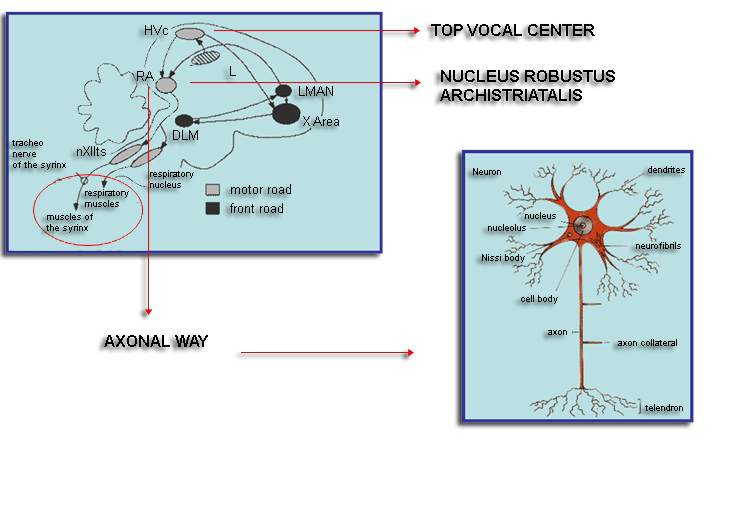
LEVELS OF TESTOSTERONE AND DEVELOPMENT OF THE SONG CENTRAL NUCLEUS
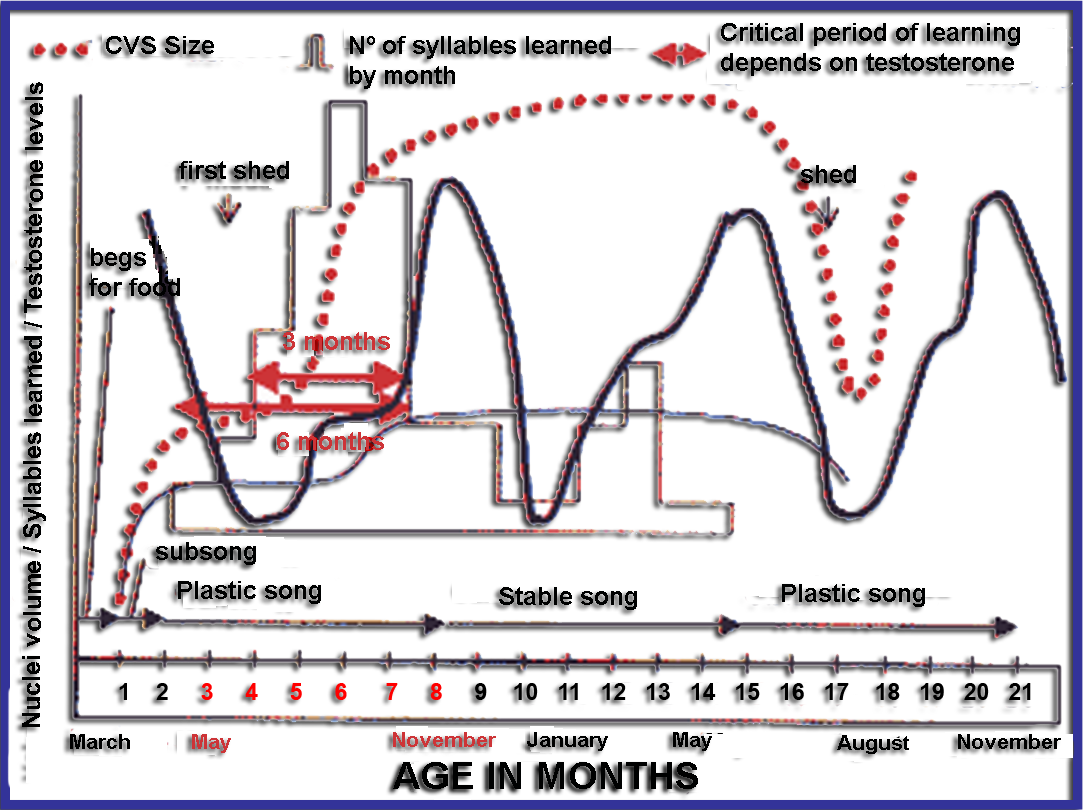
LEARNING SERINUS CANARIUS
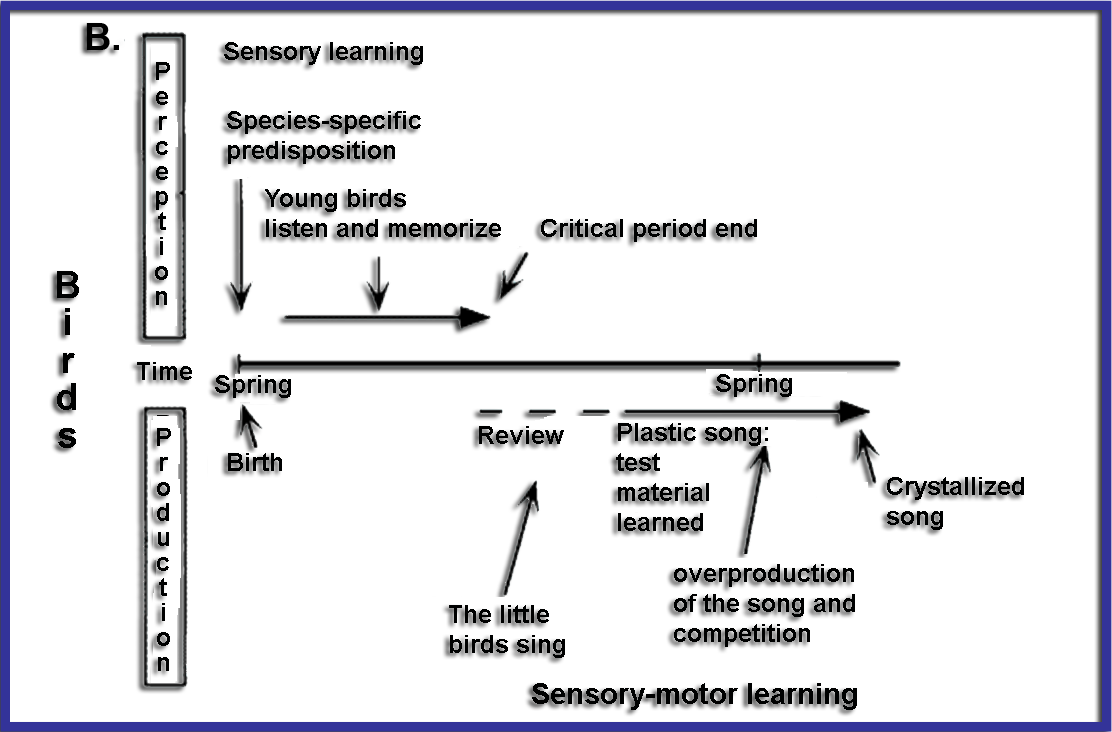
RESPIRATORY FISIOANATOMIA SERINUS CANARIUS
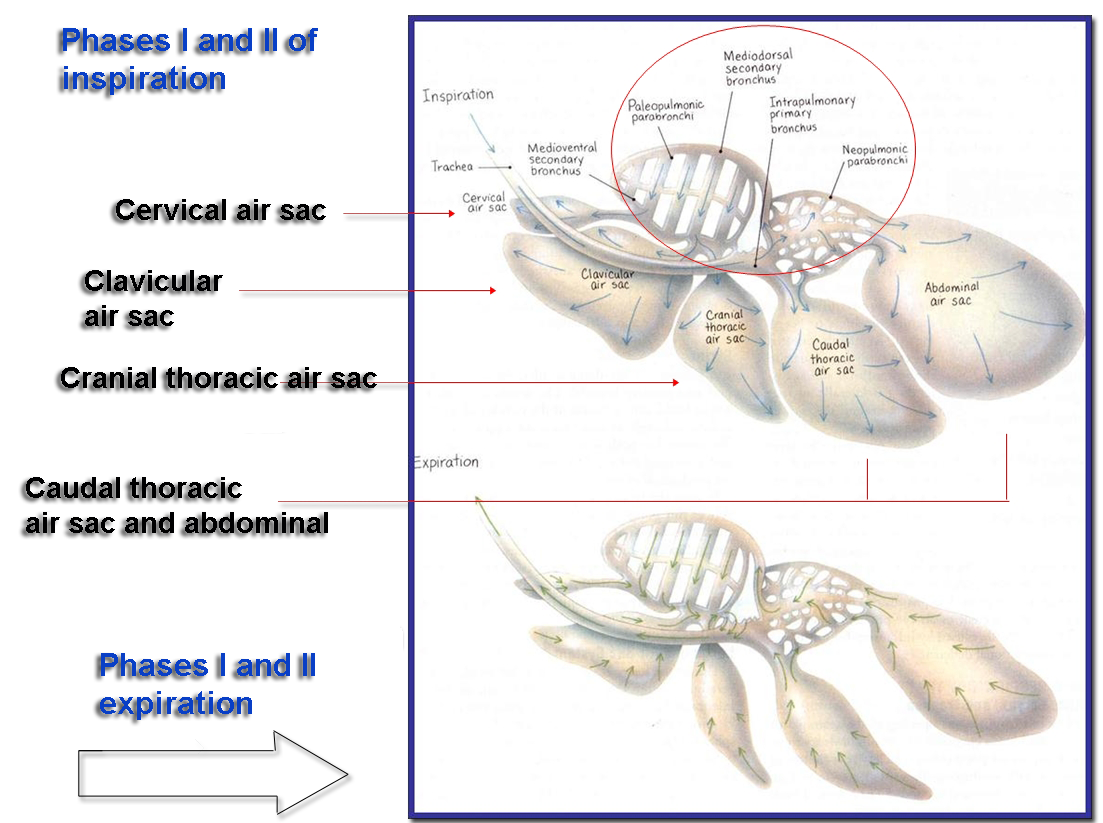
RELATIONSHIP OF THE AIR SACS OF THE SERINUS CANARIUS WITH PNEUMATIC BONES
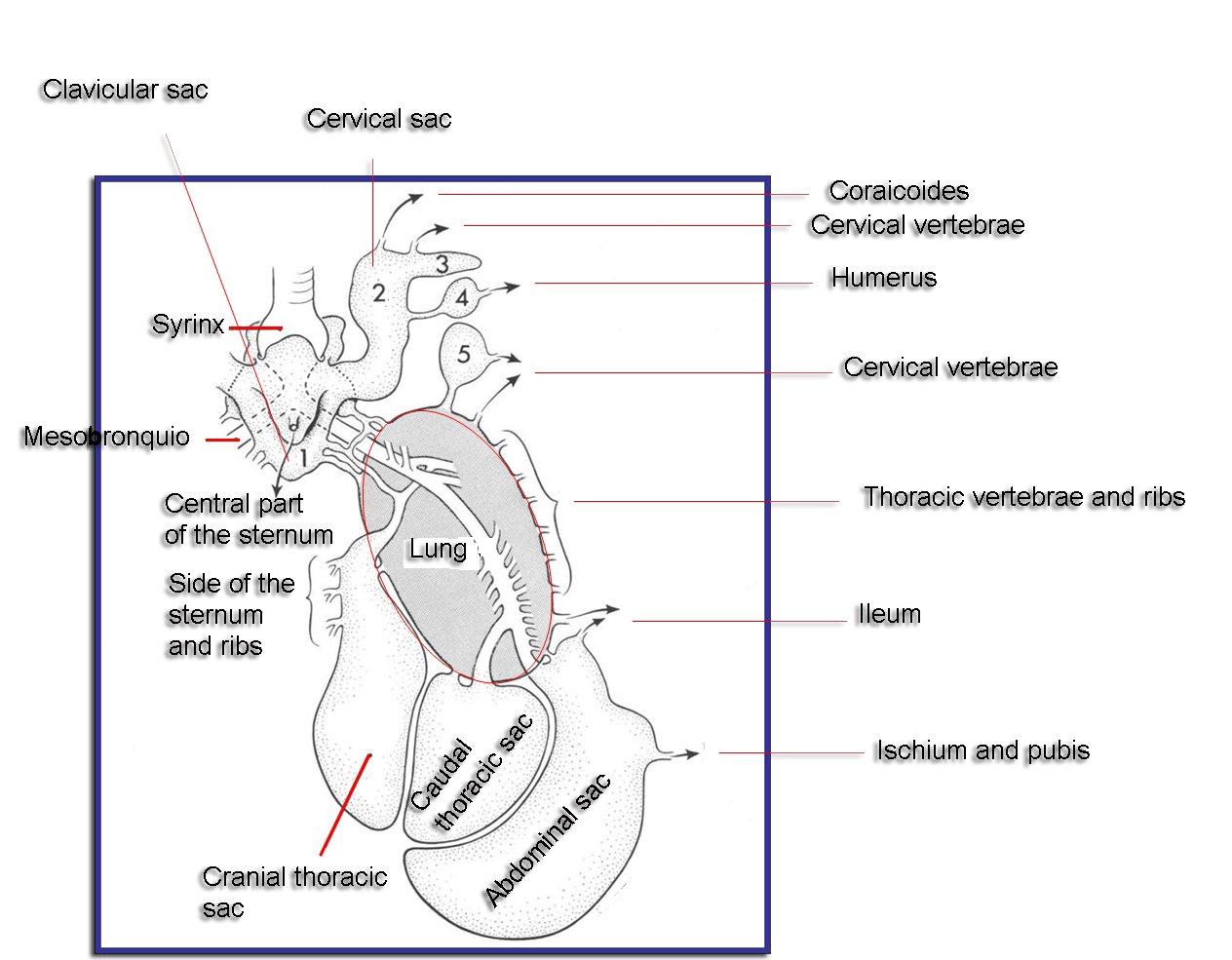
THE SYRINX
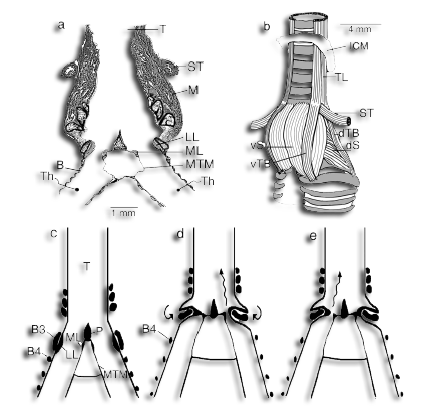 The syrinx of songbirds is a bipartite structure located at the junction of the trachea and bronchi. (a) Front Section syrinx mockingbird showing a duality of the vocal organ and the location of the microtermistores (Th) for air flow record. (b) ventrolateral view showing the syrinx musculature. (ce) schemes of the syrinx during: normal breathing (c); phonation on the left with the valves closed labiares the right (d); phonation the right side with the left closed (e). In preparation for phonation siríngeos back muscles (dS and DTB) contract and rotate the bronchial cartilage (curved arrows) toward opening siríngea, displacing lips airflow which vibrate and produce sound (wavy arrows) . Phonation may be bilateral (not shown) or unilateral. Abbreviations: T, trachea, M, muscle siríngeo, ML, half lip, LL, lateral lip, MTM, half timpaniforme membrane, B, bronchus, ICM, air sac membrane interclavicular; muscles: TL, traqueolateral, ST, esternotraqueal; vS , siríngeo ventral; VTB, tracheobronchial ventral; DTB tracheobronchial dorsal dS, siríngeo dorsal, B3 and B4, third and fourth bronchial cartilage, P, pesulus.
The syrinx of songbirds is a bipartite structure located at the junction of the trachea and bronchi. (a) Front Section syrinx mockingbird showing a duality of the vocal organ and the location of the microtermistores (Th) for air flow record. (b) ventrolateral view showing the syrinx musculature. (ce) schemes of the syrinx during: normal breathing (c); phonation on the left with the valves closed labiares the right (d); phonation the right side with the left closed (e). In preparation for phonation siríngeos back muscles (dS and DTB) contract and rotate the bronchial cartilage (curved arrows) toward opening siríngea, displacing lips airflow which vibrate and produce sound (wavy arrows) . Phonation may be bilateral (not shown) or unilateral. Abbreviations: T, trachea, M, muscle siríngeo, ML, half lip, LL, lateral lip, MTM, half timpaniforme membrane, B, bronchus, ICM, air sac membrane interclavicular; muscles: TL, traqueolateral, ST, esternotraqueal; vS , siríngeo ventral; VTB, tracheobronchial ventral; DTB tracheobronchial dorsal dS, siríngeo dorsal, B3 and B4, third and fourth bronchial cartilage, P, pesulus.
THE SONG CANARIES
AS THE CANARIES SING
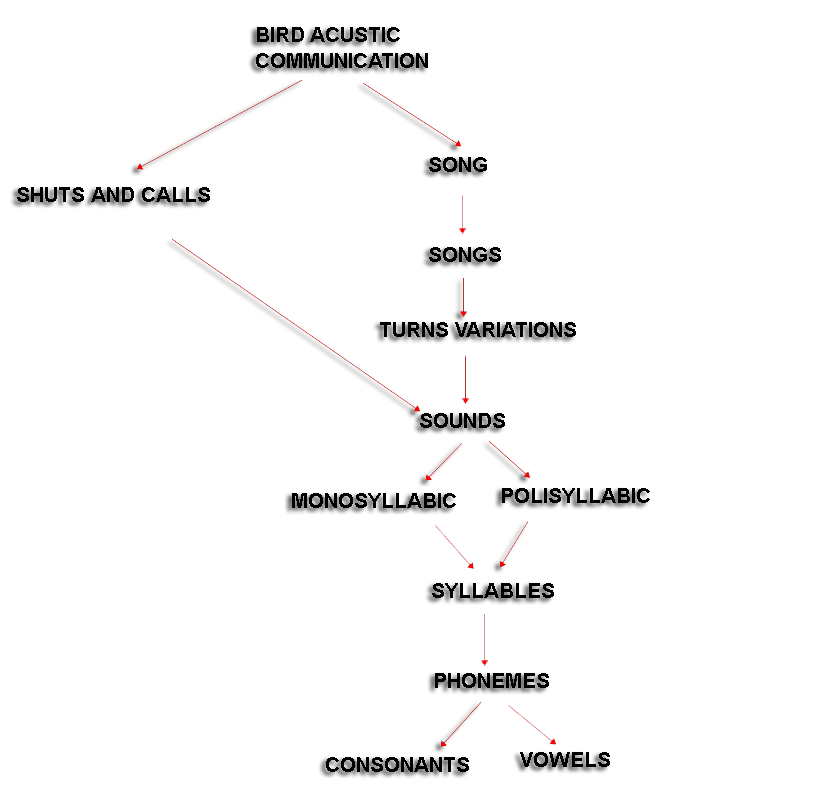
As canaries produce sounds
-FUNTIONAL EXPLANATION:
- HIERARCHY
-TERRITORIAL
-COUPLES ATTRACTION
- OTHER EXPLANATIONS:
The functional explanation does not justify the complexity and musicality of some melodious songs and production outside the breeding period.
Spectrograms: are graphical representations of the sounds and are often used for scientific study. Printed markings consist of two coordinate axes.
- The vertical axis represents the frequency of the sound in Hz or kHz., So it represents the lower bass and upper treble.
- The horizontal axis represents time in seconds.
- The intensity of the color of the lines indicates the intensity of the sound.
| A note pure and uniform, it would sound like a whistle clean, resulting in a horizontal line. |  |
| Uniformly pitched whistling up or down is represented by a line sloping up or down respectively. | 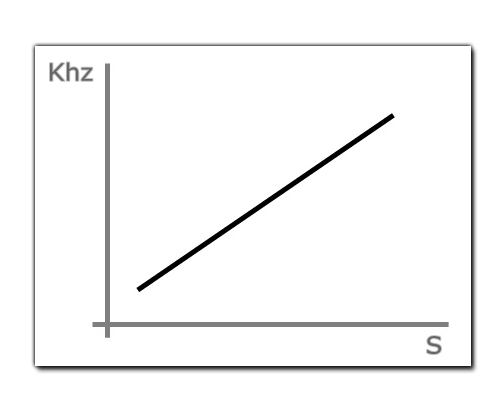 |
| A burst "instant" results in a vertical line. | 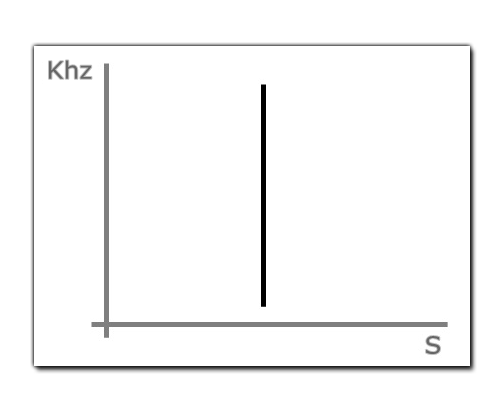 |
| The wider the line, the sound is less clean. We could say that a zumzum a constant pitch is represented by a series of marks that blend to form a broad horizontal band. | 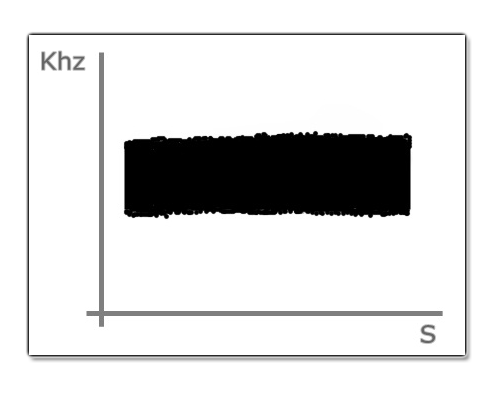 |
| The presence of harmonics are seen as parallel lines above or below the main line. | 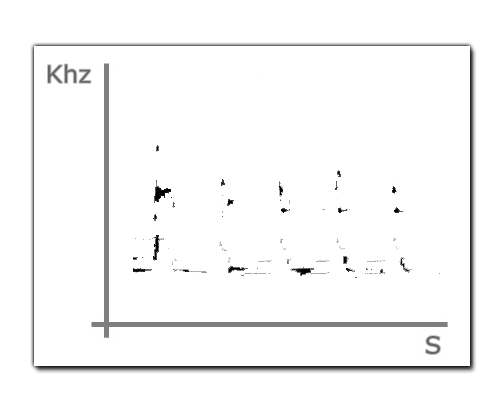 |
The Roller Song tonal spectrum is lower among song canaries. Its base is in continuous rhythm tours hollow sound, reaching over 40 sounds emit per second in its variation queen, Hohnrollen. Also highlight the knorren with its spectacular double cavernous sound, the most serious of those is capable of emitting a canary.

The Malinois song develops in meduim frequencies and medium-high. Its base is aqueous loudness variations, hence its official name: Waterslager. Rhythmically is unfamiliar and equally highlights the three emission rates (continuous, semi-continuous and discontinuous), although its variation is Klokkende Waterlag star, clucking sound of water or hammered, which is discontinuous rate, not forgetting the spectacular Bollende Waterlag , bubbling water, semicontinuous and spectacular rhythm feeling perceiving sounds more than two at a time (caused by that particular sound of breaking air bubbles).


The Spanish Song Discontinuous shares the tonal spectrum with Ringing, hence there who would deny his personality as independent race and consider it as one more variety within the Ringing Spanish. However, specializes in discontinuous rate variations, having been removed from her repertoire of continuous rate turns. Although his repertoire should highlight metal loudness variations, also characterized, to a greater extent than the other races, by the emission of compounds that produce sounds in the listener the feeling of hearing two or more sounds at once, hence that is capable of combining in a single loudness variation different sounds (metal-hollow, hollow-aqueous, etc.).

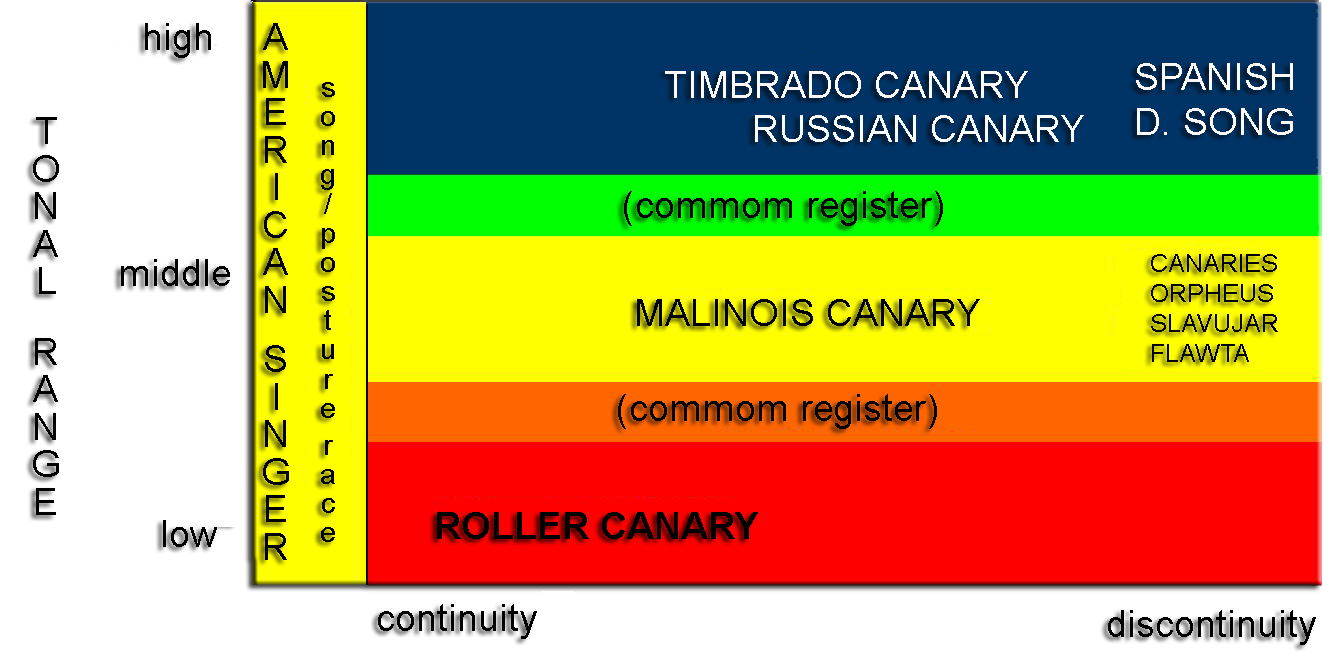
THE SPANISH DISCONTINUOUS SONG CANARY
INTRODUCTION
Foundations of a good singer
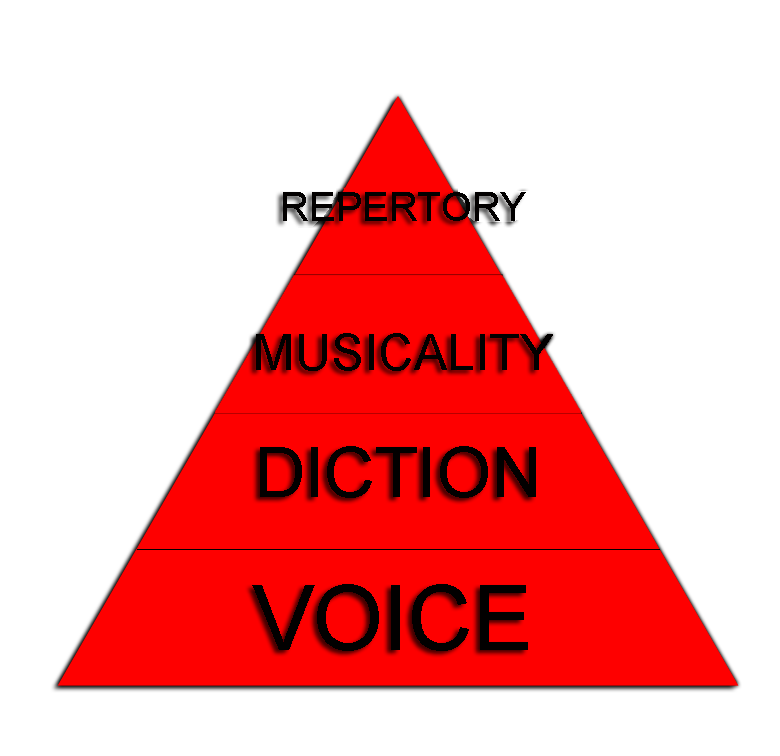
Qualities of sound
The tone or height depends on the number or frequency of vibrations per second of the body that produces the sound, we can distinguish a low sound of a sharp sound (the higher the number of vibrations sharper the sound) and is measured in hertz or cycles.
The intensity or strength depends on the wave amplitude, ie the energy used in the production of sound, allows us to distinguish a loud sound of a weak and is measured in decibels.
The timbre, quality or color of sound depends on the number of harmonics that accompany the main sound and allows us to distinguish two sounds in the same tone. The duration is the time that remains sound, should be sufficient for us to identify and analyze the sound quality without being repetitive or excessive length.
The duration is the time that remains sound, should be sufficient for us to identify and analyze the sound quality without being repetitive or excessive length.
Qualities of music
1) Pace: The music is composed by sounds, musical rhythm is determined by the order and proportion in time.
2) Melody is the element of music consisting of a succession of diverse sounds and interconnected whole musical sense, ie, that the melody sounds linked together with different intensity, intonation yduración, creating music.
3) Harmony is the musical element that is a combination of simultaneous sounds different, but consistent. The difference between harmony and melody lies mainly in that the melody sounds follow one after another and in harmony sounds overlap.
- Development of turns compounds.
- Development of nativism and singing canaries absence of adult education or any other artificial method.
- Singing not stereotyped.
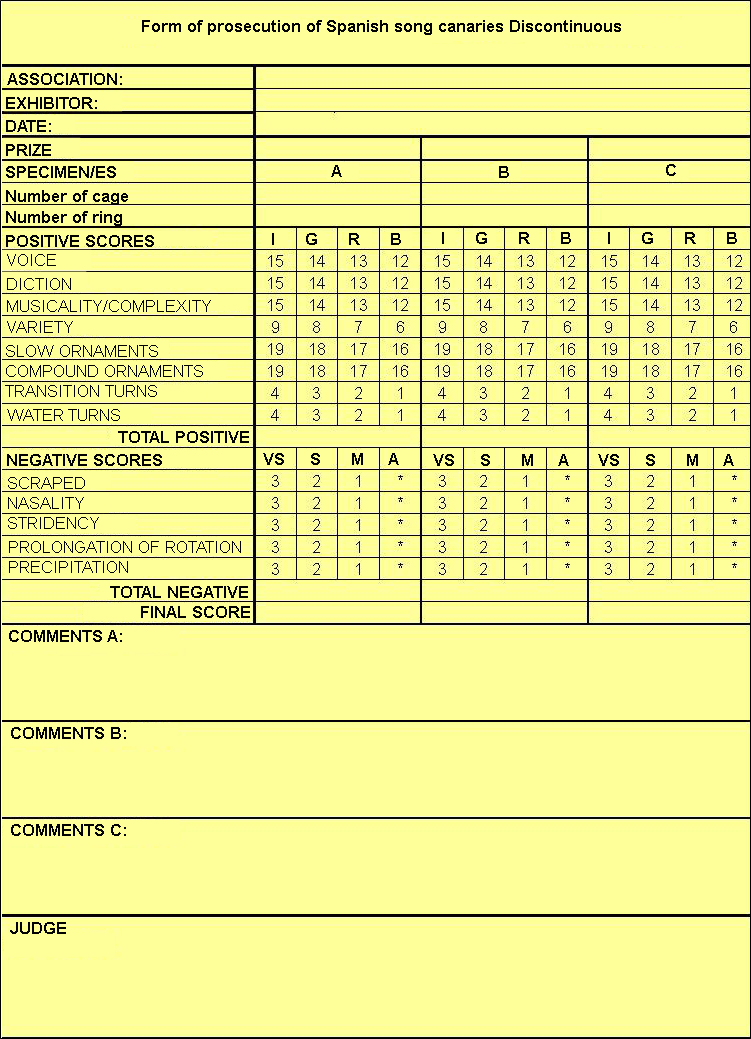
Voice
The Spanish song canary singing batch must issue a medium-high tonal register and/or moderately high(acute) a spectrogram normally recorded frequency range between 1 and 7 kHz, records low or medium-low only permissible in specific and concrete sounds, its voice should be bright and sound.
Diction
Correct way to issue or “utter” sounds. By analogy with human language we say that the sounds issued by canaries are composed of consonants and vowels, although due to the complexity of many of the sounds they do they can not successfully transcribe onomatopedically with our limited phonetic system. Diction of our canaries should be clean and crisp, with a good balance between consonants and vowels phonemes, but with a predominance of vowels.
Musicality/Complexity
Understand the issue as musical rhythmic and melodic singing, evidenced by the ability ofthe sample to play with the issue rate, tones an intensity of sounds.
Understand the capacity and complexity of the sample to vary the structure of the song, changing the order of issuance of drafts or omitting or inserting sounds on the fly, as well as the ability to make the same sound changes.
Variety
Although the present code puts the quality of the sounds issued by the canary before the quality, it will be rewarded the wealthy and variety of the number of turns which take part in the song as well as its capacity to issue several different songs in its song.
Slow ornaments
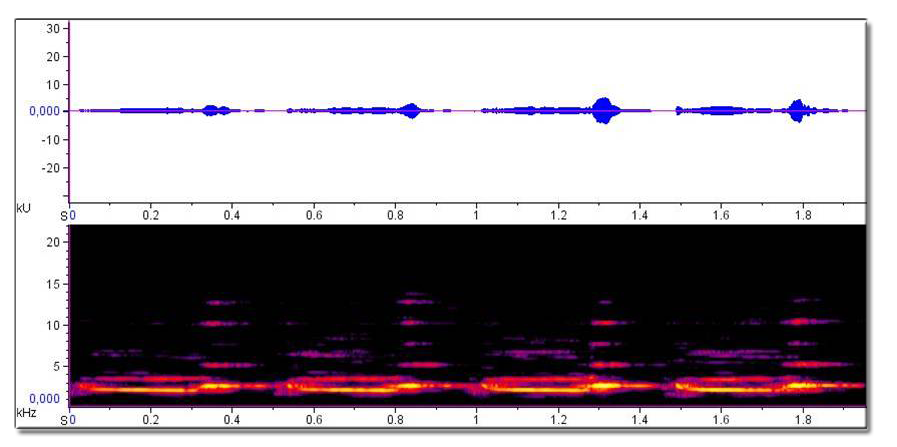
Example:
More examples:
Turns formed by simple of polysyllabic sounds of discontinuous rhythm and no watery tone, in which the specimen drags out the vowels or slows down. In a clearly beaten way the issue of turn rhythm in connection with the medium pare of issue of the rest of variations that take part in the song.
Compound ornaments
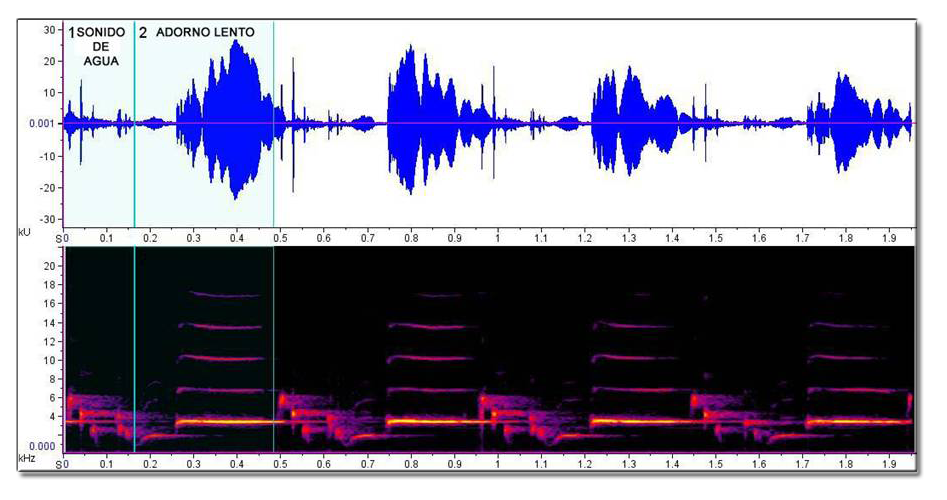 Example:
Example:
More examples:
Polysyllabic turns in which take part /K/ phoneme and/or a watery sound. They will be also considered as compound ornaments those sounds in which it produces in the listener the acoustic feeling of being hearing more than one sound at the same time.
Transition turns
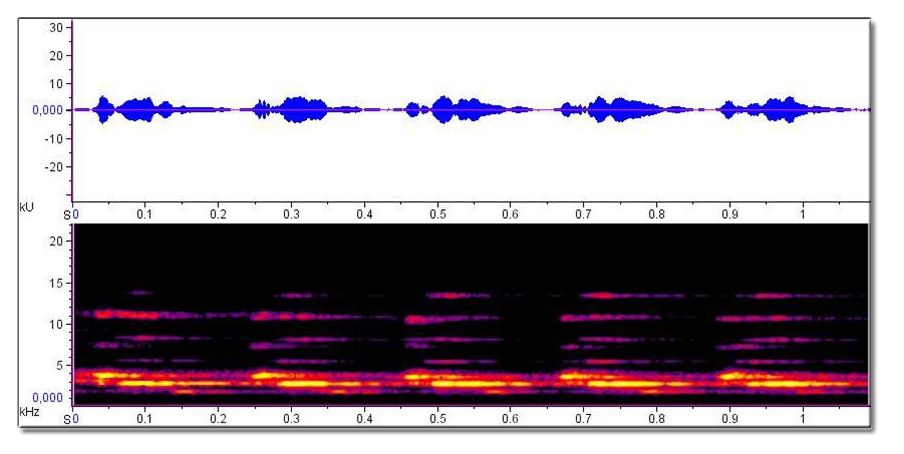
Example:
More examples:
Turns composed by simple and polysyllabic sounds, of usually semi constant rhythm and no watery voice, which are used as link or rest and enrich the song contributing musically with variety and contrast.
Water turns
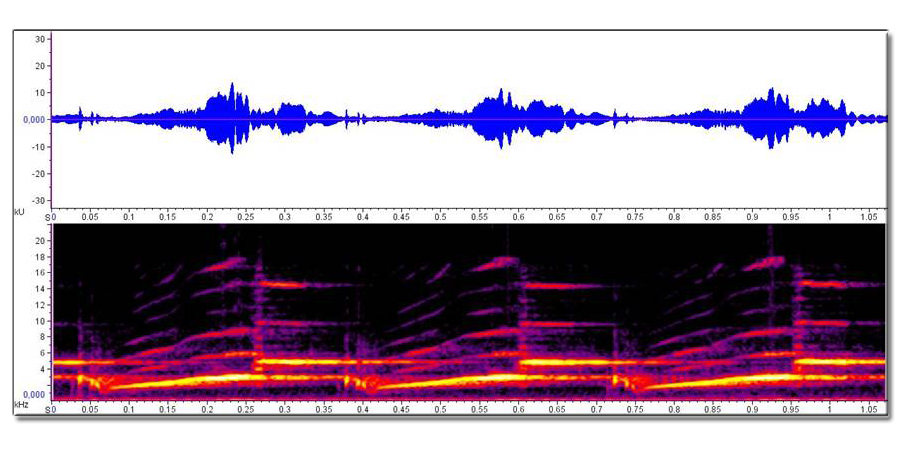 Example:
Example:
More examples:
Simple turns, composed by monosyllabic or polysyllabic sounds in which only consonants take part in one of the syllables (simple polysyllabic), of watery voice, and discontinuous or semicontinuous issue rhythm.
NEGATIVE SCORES
Scrapeds
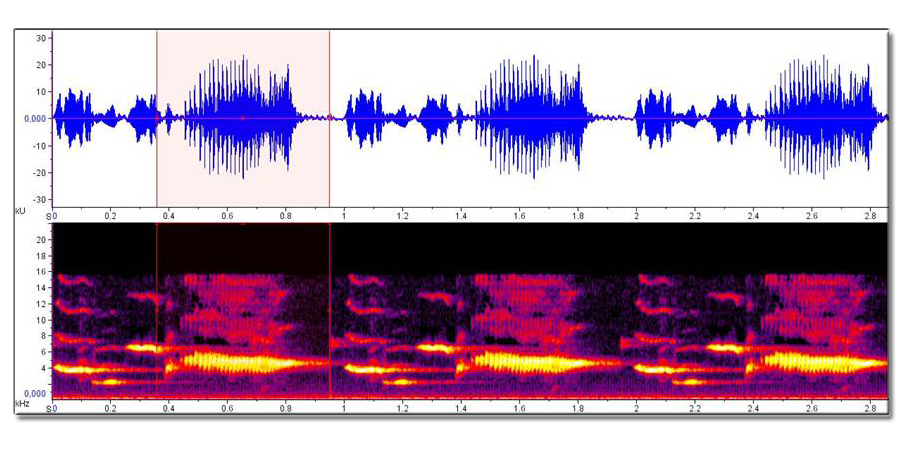 Example:
Example:
More examples:
Fault consisting of giving out sounds with an excessive predominance of /r/ phoneme over the vowel, leading to an extremely unpleasant sound for our ear.
Stridencies
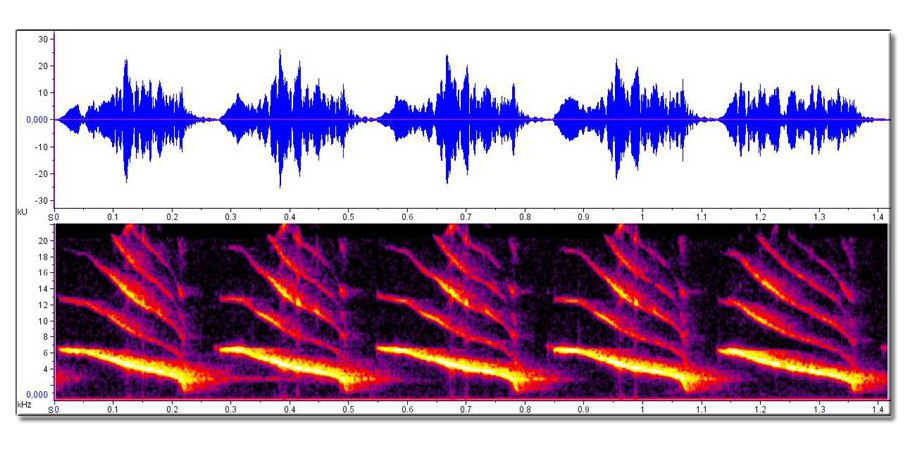 Example:
Example:
More examples:
Stridencies are a fault consisting of a sharp and sudden raising of the sound of a turn in tone or intensity, producing a high flown sound that breaks the melodic line of the song.
Nasality
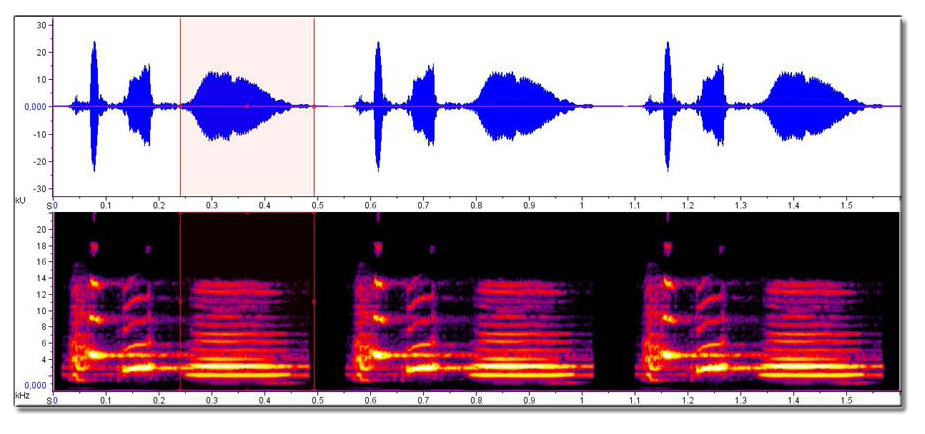 Example:
Example:
More examples:
Nasality is a fault consisting of producing imperfect sounds similar to those a person gives out with problems in their respiratory tracts when speaking, hence the name of nasality. It usually be due to the inadequate diction of the vowels which take part in the turn or when there are certain consonants involved ( as for example /n/ and /G/ that, due to its voice, show a higher tendency to show signs of this fault, it can be also due to respiratory system problems of the specimen.
Prolongation of rotation
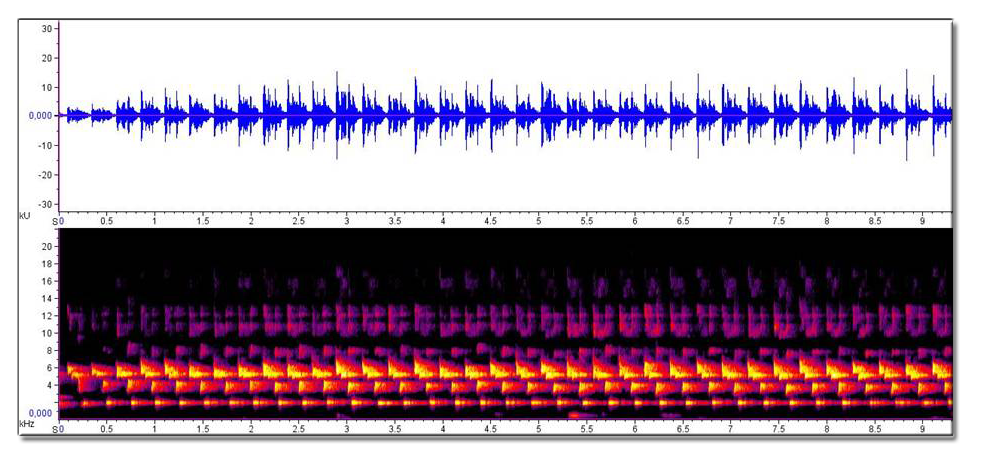 Example:
Example:
Fault consisting of excessive turn length that breaks the melodic line of the song. It won’t be considered turn lengthening when the canary modulates its tone or intensity or plays with its issue rhythm, provided doesn’t break the song melodic line.
Precipitation
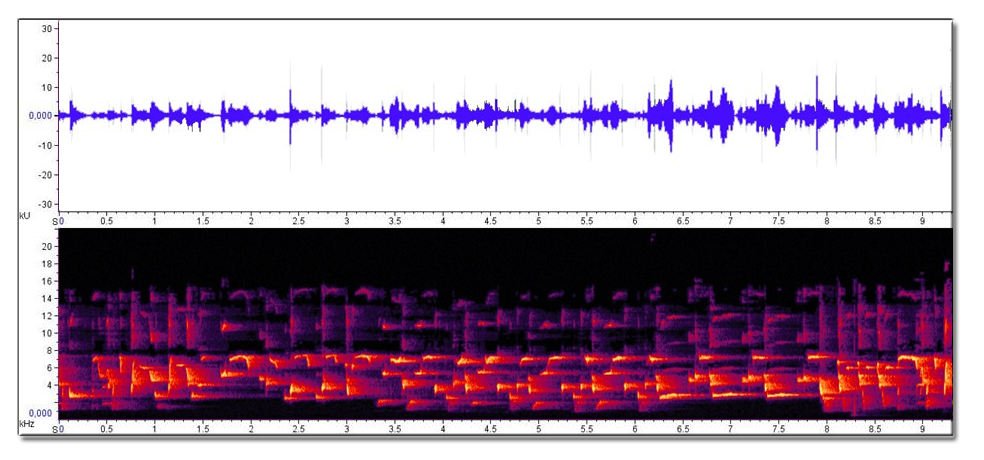 Example:
Example:
Fault consisting of in a rush and hasty song issue.
SONG ASSESSMENT
Song assessment previous questions.
Before assessing the song, it will must be expected the specimen starts to sing reaching the adequate intonation and defining several turns or variations that make up it. We will must also to ensure the specimen enjoys perfect health and, concretely isn’t suffering from any kind of illness what can affect the voice or respiratory tract.
In the event of the specimen doesn’t reach the song development in an adequate way during the time of its trial because it gives out the sound in a choking way and lack of any link, it will be recorded this factor in the trial file.
If the specimen shows loss of voice symptom or it is hoarse its song won’t be valued either, starting the cause in the trial file. They won’t be valued either the specimens that show, when they are singing, the consequences of an excessive jealousy state, being evident by the song issue in the stand over position( specimen length way placed and with the wings down, jumping nervous from a stick to other in the cage singing with higher intensity or volume and rhythm than normal)
QUALITIES OF THE CANARY LIKE PERFORMER ASSESSMENT
- Voice
Well defined the Spanish Canary Cong Discontinuous voice as brilliant and bearing in mind that the song must be given out predominantly in a medium or moderately high tone file, while that in the song of every canary we find out three king of passages concerning to bell and tone mainly (metal, empty and watery) we will apply the punctuations in the following way:
-
Ideal, 15 points: When brilliance is joined to the metal tone of the song.
-
Good, 14 points: When together with the brilliance there is a balance a among metallic empty and watery sounds.
-
Regular, 13 points: When without lossing the brilliance predominate empty and/or watery sounds in the song.
-
Bad, 12 points: Shorten, broken, nasal or too poor voices, when its seriousness doesn’t prevent the specimen assessment.
- Diction
Ideal, 15 points: When consonants are clearly perceived but predominate the vowels sound, making the sound works softer and nicer.
Good, 14 points: When there is a balance in the consonant and vowels pronunciation.
Regular, 13 points: When the consonants sound predominate over vowels one.
Bad, 12 points: When it is hard to distinguish consonants from sounds.
- Musicality - Complexity
Ideal, 15 points: When musicality and complexity come together whit the song.
Good, 14 points: When musicality predominates in the song.
Regular, 13 points: When complexity predominates in the song.
-
Bad, 12 points: Pour musicality and complexity in the song.
REPERTORY ASSESSMENT
- Variety
-
Ideal, 9 points: Turns and songs variety.
Good, 8 points: Songs variety.
Regular, 7 points: Turns variety.
Bad, 6 points: Poor or repetitive turns repertoire.
TURNS ASSESSMENT
To start the analysis and assessment of the different turns that the canary voices in its song, we must answer three questions:
WHAT KING OF TURN DOES THE CANARY VOICE?
HOW DOES THE CANARY VOICE IT?
WHERE DOES THE CANARY VOICE IT?
1º TURN IDENTIFICATION: Answer first question.
a) phonetic text analysis(simple, polysyllabic or compound)
1) Simple turn: Those made up by monosyllabic or polysyllabic sounds in which take part only consonants in one of the syllables, these last sounds will be named simple polysyllabic.
2) Polysyllabic turn: Those made up by polysyllabic sounds in which take part consonants in more than one syllable.
3) Compound turns: Turns made up by more than one tone colour sound (watery-metallic, empty-metallic, empty-watery, watery-metallic, so on).
b) Issue rhythm study (continuous, semicontinuous and discontinuous), because there are turns that share the same consonants and vowels and it is only distinguishable attending to the issue rhythm. They will be considered in this respect:
1) continuous rhythm turns: Those with issue rhythm between 10 to 15 (depending on the higher or lower tone of the sound) or more syllable in a second, cause by what it seems that the sound is happening without continuity solution; because our ears aren’t able to perceive the several syllables that the canary is able to produce due to the so-called sensory persistence phenomenon (our brain believes that is listening a continuons sound)
2) Semicontinuons rhythm turns: our ear is able to distinguish each one of the syllables that make up the turn, because the issue rhythm is between 5 a 9 syllables by second, although the semicontinuous rhythm turns that can be better valued, because its issue way are those given up with a rhythm between 5 to 7 syllables in a second.
3) Discontinuous rhythm turns: The division between the different syllables or words of the turn are even more marked (we so-called words to the different sounds that make up o turn or variation and are composed by two or more syllables interweaved), the issue rhythm is four or less syllables in a second.
This classification must not be considered in a rigid way, because the same king of turns con be given out with different rhythms.
2º TURN ANALYSIS: Answer 2nd and 3rd questions.
a) DICTION PURITY
Poor: It is hard to distinguish the consonants that take part in the turn.
Regular: The consonants sound predominates over the vowels. Good: Balance between consonants and vowels pronunciation.
Very good: The consonants are clearly perceived but the vowels sound predominates, making softer and pleasant the final sound.
b) CONTROL AND DIFFICULTY (issue way)
- Concerning to tone: Straight or modulated (upward, downward or wavy). They are considerated more valuated the modulated the modulated turns, being its worth order from higher to lower value the following: a) Wavied modulation b) downward modulation; and c) up ward modulation.
Concerning to intensity (musical nuances involving the capacity of the specimen in playing with the turn sound intensity; example: get louder, get downer, forte, fortissimo, piano, pianissimo, so on).
Concerning to rhythm: capacity of the specimen to alter the turn musical rhythm (i.e.: raising or falling the issue rhythm).
Phonetics complexity of the turn (paying attention to the number of consonants and vowels taking part in the turn)
Turn length: It can’t be either very short or very lengthy, keeping proportion and balance with the turn which composed the song.
c) BEAUTY: INTRINSIC MUSICALITY (turn itself) and EXTRINSIC (the turn in the canary’s song or melody).
3º SCORE APPLICATION.
1º) When there are several turns in the same epigraph of the trial list, the assessment will be made as the coldest and the most objective as possible, paying attention to their medium quality. We have to avoid being king by the happening of extremely valued turns together with other mediocre or faulty ones or, contrary, too strict to consider the faults over the virtues.
2º) The score scale of the different turns is divided in four ladders:
a) Ideal: foor very good, excellent or superior turns.
b) Good: Turns considered like this.
c) Regular: For regular, enough or passable turns.
d) Bad: For poor but not faulty quality turns.
3º) Diction purity, the control and difficulty, while the beauty and musicality of the turn will bring about the score step.
Schematically, the score application will be the following:
POSITIVE SCORES
POSITIVE SCORES |
I | G | R | B |
SLOW ORNAMENTS |
19 | 18 | 16 | 15 |
COMPOUND ORNAMENT |
19 | 18 | 16 | 15 |
TRANSACTION TURNS |
19 | 18 | 16 | 15 |
TURNS WATER |
19 | 18 | 16 | 15 |
NEGATIVE SCORES
NEGATIVE SCORES |
Very serius | Serius | Light | Absence |
SCRAPED |
3 | 2 | 1 | * |
NASALITY |
3 | 2 | 1 | * |
STRIDENCY |
3 | 2 | 1 | * |
TURN LENGTH |
3 | 2 | 1 | * |
PRECIPITATION |
3 | 2 | 1 | * |
DISCUALIFICATION REASONS
- Administrative
Specimen without ring set.
-
Ring with no diameter set that can be removed from the leg of the bird without damaging it.
-
Show signs that can identify the breeder.
-
The bird has got more than one ring.
- Coming from the Song Code
- Issue in the song of continuous rhythm sounds.
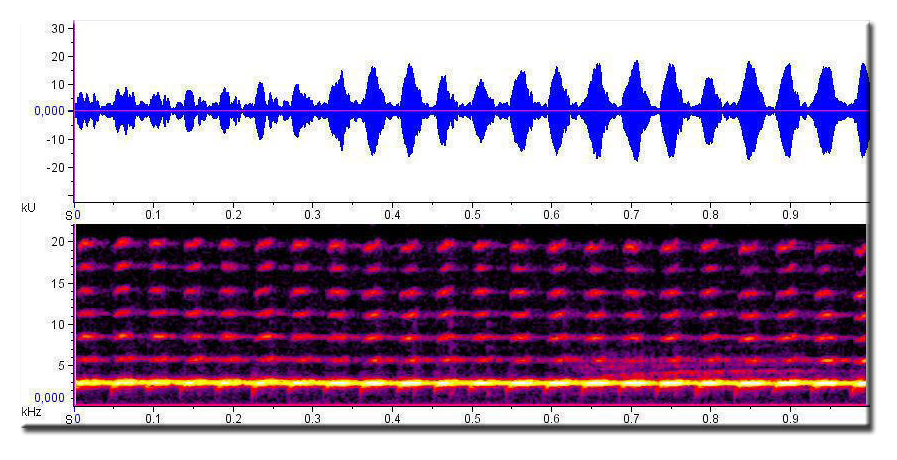
Example:
2) Any character in the phenotype of the specimen that bearing the judge to the belief that it is product of the cross, education or selective diversion with other race or variety:
a) Observe ruffled feathers in the phenotype that highlight a possible cross with curled position canaries.
b) Observe red factor.
c) Presence, in the issue form or composition, of own characteristic of song canary other races.
-
3) Those other being accepted by general meeting of the technical committee. SEE
TIEBREAKER RULES
1º) Concerning to negative sore absence.
2º) Concerning to the less quantity of negative score.
3º) Concerning to the less amount of warnings in negative scores.
4º) Concerning to the quantity of voice, diction and musicality or complexity ratings.
5º) Concerning to slow ornaments score.
6º) Concerning to compound ornaments score.
7º) Concerning to variety score.
8º) If the tie persists, the judge decides.
GUIDANCE TABLE
| Exceptional specimen : >= 93 points. |
| Very good specimen: 91-92 points. |
| Good specimen: 90 points. |
| Meduim quality specimen: 89 points. |
| Accetable specimen: 87 – 88 points. |
| Mediocre specimen: 85 – 86 points. |
| Low quality spacimen: < 85 points. |
FACTORS AFFECTING THE PROSECUTION
- The canaries
- Stress (travel, stay in unusual environmental conditions, etc..).
- Change of diet in competition.
- Influence of environmental conditions where the canaries settle before trial.
- State health / voice problems.
- Training.
- Variability characteristic of living things (are not machines and not always yield the same).
- Interaction between the members of the batch (not sung that starts another, one gets to bathe and encourages others to the same behavior, etc.).
- Box song and Trial room
- Box song (box type and materials they are made).
- Acoustic prosecution room (influence on hearing echoes, reverberations, echoes and sound reflections).
- Light cabin (light type and location of the light sources).
- Temperature prosecution and interior cabin room.
- Noise outside the trial room.
- Noise caused by the public attending the trial.
- The judge
- Hearing, sensitivity and musical education of the judge (hearing of people varies with age).
- Preparing technical and conceptual clarity of the judge.
- Unit of the Scientific concepts.
Fuente: Información cedida por la Comisión Técnica de Canto Español Discontinuo de FOCVA.

